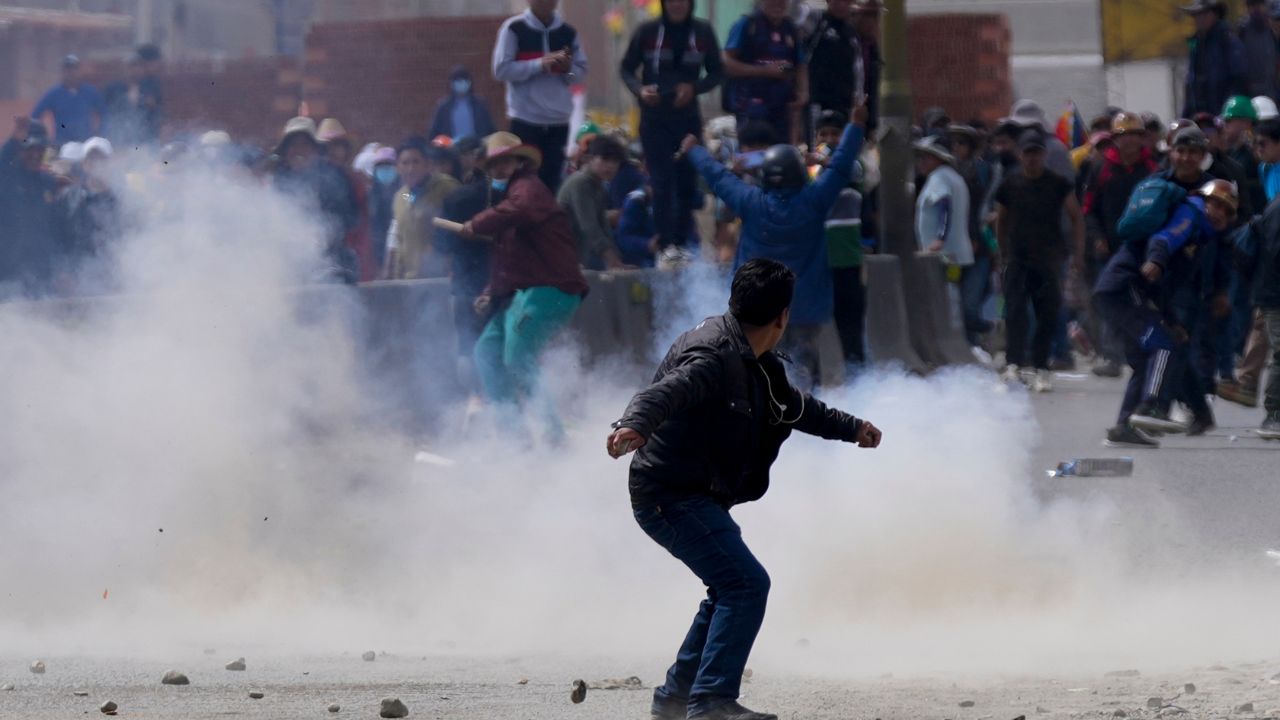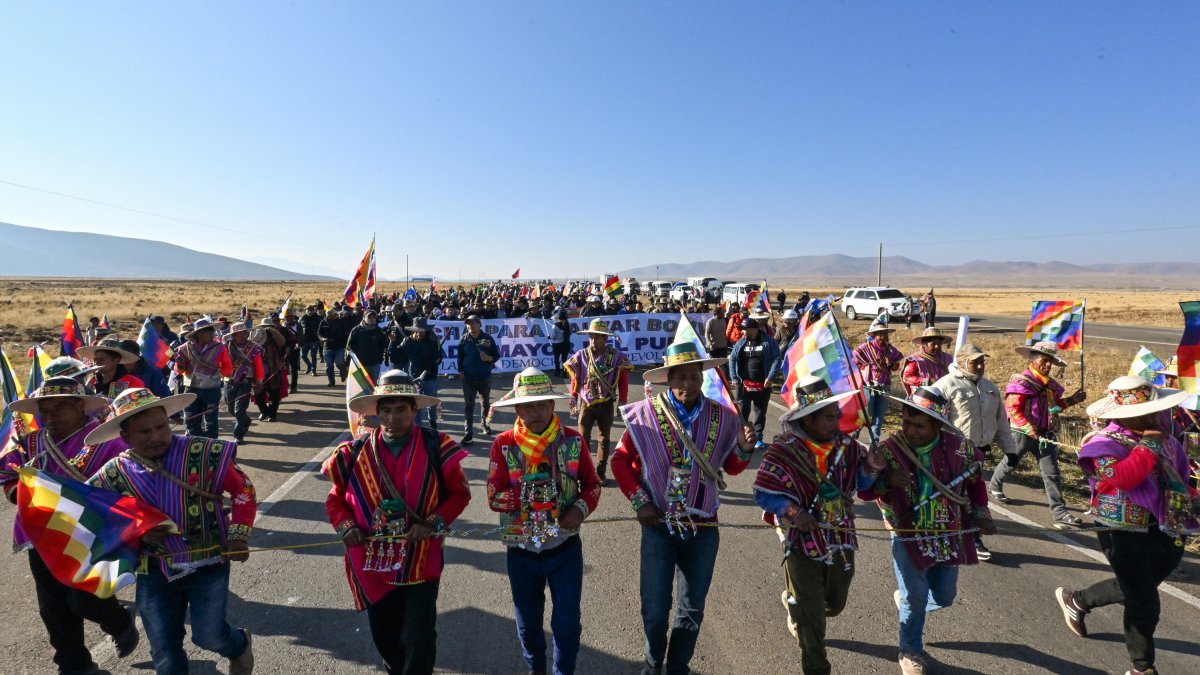Bolivia, a country with a rich indigenous heritage and a turbulent political history, finds itself once again at the crossroads of social unrest and political instability. The recent clashes between pro-government supporters and protesters loyal to former President Evo Morales have laid bare the deep-rooted schisms within Bolivian society. These events mark a troubling escalation in the nation’s internal conflicts, igniting concerns about its long-term stability and the broader security situation. As the country moves toward its next presidential election in 2025, the fierce rivalry between Morales and current President Luis Arce has transformed into a symbolic struggle for the future of Bolivia’s governance. Amid worsening economic conditions, weakening foreign reserves, and the fragmented political landscape, the Bolivian state is increasingly fraught with risks that threaten to destabilize its internal security.

Clashes in El Alto
The city of El Alto, perched on a high plateau overlooking Bolivia’s capital, La Paz, has historically been a flashpoint for social and political unrest. On a fateful Sunday in September, the city became the epicenter of violent confrontations between Morales’ loyalists and pro-government supporters. These clashes, fueled by political polarization and the country’s deteriorating economic situation, have reignited concerns over the security and stability of Bolivia.
The violence that unfolded in El Alto began when protesters aligned with Morales, who had been leading a 190-kilometer (118-mile) march toward La Paz, confronted security forces and Arce’s supporters. What initially began as a demonstration quickly devolved into a chaotic melee, with both sides hurling firecrackers, homemade explosives, and stones at one another. Riot police responded with tear gas, attempting to disperse the crowds and restore order. The violence left at least eight people injured, according to reports from Bolivia’s health ministry.
El Alto’s streets, filled with acrid smoke from burning tires and tear gas, became a battleground between competing political factions, each seeking to assert its dominance. Morales’ marchers, emboldened by their former leader’s rhetoric and the symbolism of indigenous resistance, pressed deeper into the city, while government forces scrambled to contain the unrest. This violence underscores the fragile security situation in Bolivia, where deep political divisions have the potential to erupt into broader conflict.
The Power Struggle Between Morales and Arce
At the heart of Bolivia’s current security challenges lies the bitter power struggle between former President Evo Morales and his one-time ally, now President Luis Arce. Morales, Bolivia’s first indigenous president, rose to power in 2006, positioning himself as a champion of the country’s marginalized indigenous population. However, his tenure was not without controversy. In 2019, Morales was forced to resign after his bid for a third term was marred by allegations of electoral fraud and mass protests. Despite his resignation and subsequent exile, Morales has maintained a significant base of support, particularly among Bolivia’s indigenous communities and the poor.
Arce, once Morales’ economy minister, took over the presidency in 2020, following a tumultuous period of interim government rule. Initially seen as a continuation of Morales’ socialist policies, Arce has since distanced himself from his former mentor, sparking a rift within Bolivia’s ruling Movement for Socialism (MAS) party. This division has paralyzed the government, exacerbated Bolivia’s economic woes, and led to frequent street protests. The March to Save Bolivia, organized by Morales, is both a protest against the economic policies of Arce’s government and an attempt to reassert his political influence ahead of the 2025 elections.
The tension between Morales and Arce has become more than just a personal rivalry; it symbolizes a broader struggle over the future direction of Bolivia’s political landscape. Morales represents a return to a more radical, populist form of governance, while Arce, though socialist, has taken steps to moderate Bolivia’s economic policies in light of the country’s dire financial situation. This internal division has left the MAS party in disarray and the Bolivian government largely incapable of addressing the country’s growing security and economic challenges.

A Catalyst for Unrest
Bolivia’s political turmoil is compounded by its deteriorating economic situation. The depletion of the country’s foreign exchange reserves, widespread poverty, and a struggling economy have created fertile ground for unrest. Morales’ supporters, many of whom are drawn from Bolivia’s poorest and most marginalized communities, have been particularly affected by the economic collapse. Their participation in the ongoing protests is driven by frustration with President Arce’s handling of the economy, as well as a belief that Morales offers a path to recovery.
Under Morales, Bolivia experienced a period of rapid economic growth, fueled by the country’s abundant natural gas and mineral resources. However, the global decline in commodity prices, coupled with mismanagement and corruption, has eroded Bolivia’s economic gains. The COVID-19 pandemic further exacerbated the country’s financial woes, pushing more people into poverty and increasing reliance on government support. With foreign exchange reserves dwindling and inflation on the rise, the country faces a severe economic crisis that threatens to plunge more of its citizens into hardship.
The economic collapse has also undermined public confidence in the government’s ability to maintain order. As the state struggles to meet the basic needs of its population, criminal activities, such as smuggling and illicit drug trade, have surged. The proliferation of these activities not only fuels violence and insecurity but also weakens the authority of the state, particularly in rural and border regions. In this context, political protests are no longer just about ideology or loyalty to a particular leader; they are expressions of deep-seated grievances about poverty, inequality, and a lack of opportunities.

Security Forces and Governance Challenges
The role of Bolivia’s security forces in managing the escalating violence and political unrest has come under increasing scrutiny. As seen in the clashes in El Alto, the police and military have been deployed to contain protests, often resorting to tear gas and other crowd-control measures. However, the loyalty of these forces has been called into question, as factions within the military and police remain divided in their support for Morales or Arce.
Morales has accused the government of using “paramilitary groups” to incite violence and suppress his supporters. These allegations, while unproven, speak to a broader issue of mistrust between the security forces and Bolivia’s political elite. Under Morales’ presidency, the military and police were heavily politicized, with promotions and appointments often tied to loyalty rather than merit. This legacy has left Bolivia’s security apparatus deeply factionalized, with some officers loyal to Morales and others to Arce.
This division within the security forces complicates the government’s ability to respond effectively to the growing unrest. As protests spread across the country, the possibility of defections or mutinies within the ranks of the police or military becomes an increasing concern. Moreover, the politicization of the security forces has led to questions about their professionalism and their ability to act impartially in maintaining order.
The lack of trust in Bolivia’s security forces extends to the broader population, particularly in regions where Morales retains strong support. Indigenous communities and rural populations, who have historically been marginalized by the central government, often view the police and military as instruments of repression. This mistrust has been exacerbated by the government’s heavy-handed response to protests, further alienating these communities and driving them into the arms of Morales and his movement.
Bolivia’s internal security situation is not unfolding in a vacuum. The country’s political and economic instability has drawn the attention of neighboring countries and international organizations. Regional powers such as Brazil, Argentina, and Chile have a vested interest in ensuring stability in Bolivia, given its strategic location in South America and its role as a transit hub for energy resources.
However, international actors have been cautious in their involvement, wary of being seen as taking sides in Bolivia’s internal political struggles. The Organization of American States (OAS) and the United Nations have called for dialogue between the rival factions, urging both Morales and Arce to resolve their differences peacefully. Yet, these calls have largely gone unheeded, as both leaders remain entrenched in their positions.
Bolivia’s instability also has broader implications for the region’s security. The Andean region, which includes countries such as Peru, Ecuador, and Colombia, has long been a hotspot for political unrest and violence. The potential spillover of unrest from Bolivia could exacerbate existing tensions in these neighboring countries, many of which are grappling with their internal security challenges. Additionally, Bolivia’s economic collapse could lead to increased migration flows, as impoverished Bolivians seek better opportunities abroad, further straining the resources of neighboring countries.
Future Scenarios and the Road Ahead
As Bolivia lurches toward the 2025 presidential election, the country’s political and security situation is likely to become even more precarious. The rivalry between Morales and Arce shows no signs of abating, and with both men vying for control of the MAS party, the stakes are higher than ever. The outcome of this power struggle will not only determine the future of the party but also the broader direction of Bolivia’s political and economic policies.
Several possible scenarios could unfold in the coming months. In the best-case scenario, Morales and Arce could reach a political compromise, allowing for a peaceful resolution to the current crisis and the formation of a unified government capable of addressing Bolivia’s economic and security challenges. However, given the deep-seated animosity between the two leaders, this outcome appears unlikely.
More realistically, Bolivia is likely to see a protracted period of political unrest and violence, with both sides digging in for a long and bitter struggle. The continued protests and clashes between rival factions could lead to further instability, weakening the state’s ability to govern effectively and increasing the risk of wider civil unrest.

In the worst-case scenario, Bolivia could descend into a full-blown political and security crisis, with the potential for large-scale violence, the collapse of state institutions, and the rise of armed groups. Such a scenario would have far-reaching consequences not only for Bolivia but for the entire Andean region, potentially triggering a regional security crisis.
Bolivia’s current security situation is deeply intertwined with its political divisions and economic challenges. The violence in El Alto serves as a stark reminder of the fragile state of the nation’s internal stability. As Morales and Arce continue their political tug-of-war, Bolivia’s future hangs in the balance. Without meaningful political dialogue and economic reforms, the country risks sliding further into chaos, with dire consequences for its people and the region.



